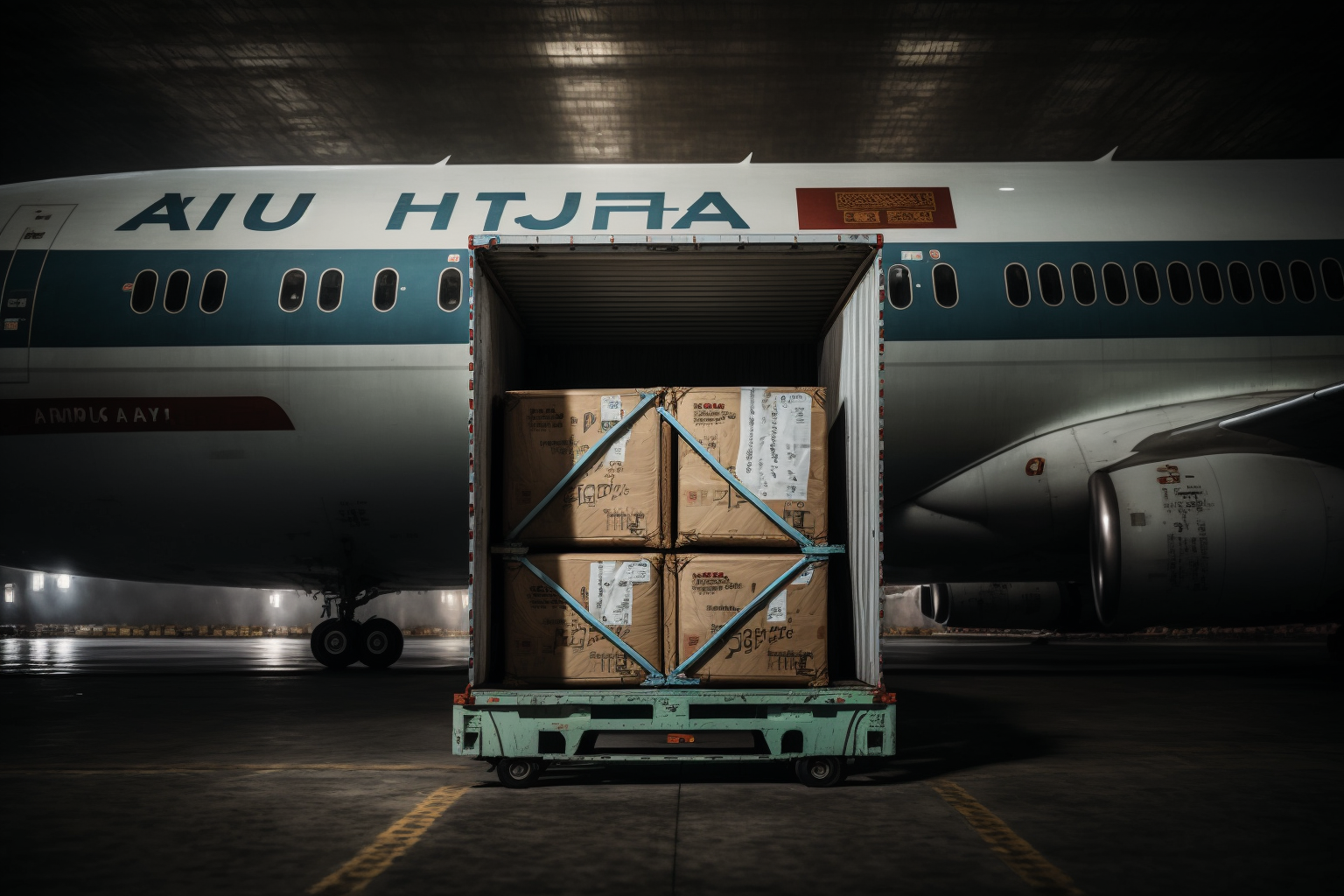The surge in need of China-USA delivery has caused a requirement for more effective and cost-effective logistics solutions. Technological logistics solutions have come up as a desirable method to hasten delivery speeds and reduce costs. This article will look into the advantages of these solutions for China-USA delivery, and why organizations should consider them.
Understanding the Benefits of Technology-Enabled Logistical Solutions
The ability to quickly and efficiently deliver goods between China and the United States has been revolutionized by technology-enabled logistical solutions. With the growth of the global economy, the need for reliable international delivery has become increasingly important. As a result, logistics providers have begun to look to technology as a way to streamline their operations, reduce costs, and improve the customer experience.
In the past, international delivery was a time-consuming, labor-intensive process with multiple parties involved in the transaction. By leveraging technology-enabled solutions, logistics companies have been able to significantly reduce the time and costs associated with international delivery. By using digital systems, companies are able to quickly and accurately track shipments, collect data, and make informed decisions about routing, pricing, and delivery options. This has enabled logistics companies to become more efficient and cost-effective, resulting in improved customer experiences.
Technology-enabled solutions have enabled logistics companies to customize delivery options for China-USA delivery. Companies are now able to offer customers a variety of delivery options including express delivery, economy delivery, and same-day delivery. These options provide customers with the flexibility to choose the delivery that best meets their needs. In addition, technology-enabled solutions have enabled logistics companies to offer real-time tracking of shipments, allowing customers to easily monitor their shipments as they travel from one destination to another.
Technology-enabled solutions have revolutionized the way in which international shipments are sent and received. By leveraging technology, logistics companies have been able to reduce costs, improve customer experiences, and offer more flexible delivery options. This has made international shipping more efficient and cost-effective, allowing businesses to better serve their customers. Get More Information about logistics technology solutions, you can read the information on the website of logistics companies.
Exploring the Impact of Logistical Solutions for China-USA Delivery
In recent years, the development of logistics solutions for delivery from China to the United States has been increasing steadily. This is due to the ever-increasing number of businesses and individuals who need to send goods to the United States, either for business or leisure. As such, it is important to understand the impact that these solutions can have on both the sender and receiver of goods.
- To start off, there are two main factors that logistics solutions can affect, which are cost and speed. Cost is always an important factor when it comes to delivery services, and logistics solutions can significantly reduce the cost of sending goods from China to the United States. This is because they can provide more efficient routes and methods of transport than traditional methods, which can often be quite expensive. Additionally, logistics solutions can also help to speed up the delivery of goods, which is a great benefit for those who need their items to arrive quickly.
- Logistics solutions can significantly reduce the cost of sending goods from China to the United States, according to the World Bank. They can provide more efficient routes and methods of transport than traditional methods, which can often be quite expensive.
- Furthermore, another important factor which should be taken into consideration is the security of the goods being shipped. Logistics solutions are typically very secure and reliable and can provide a high level of protection for goods during transit. This means that businesses and individuals can trust that their goods will arrive safely, without fear of theft or damage.
Overall, the impact of logistics solutions for delivery from China to the United States is quite considerable. These solutions can reduce costs, speed up delivery times, improve security, and have a positive impact on the environment.
Unlocking the Potential of Technology-Enabled Logistical Solutions for China-USA Delivery
As the global economy continues to expand and the demand for goods and services increases, so too does the need for efficient logistics solutions that can meet the demands of businesses and consumers. In the case of China and the United States, the need is particularly acute. With the two countries’ long-standing economic ties, the need for reliable and efficient delivery solutions is even more pronounced.
Fortunately, the rise of technology-enabled solutions has made it easier than ever to meet the logistical demands of businesses and consumers in both countries. Technology-enabled solutions such as cloud-based systems, automation, and AI-driven analytics are transforming the way goods are shipped and tracked throughout the entire supply chain.
In addition to making it easier to track shipments and coordinate deliveries, these technologies are also helping to reduce the cost of shipping and delivery. By providing more accurate information about delivery times, destinations, and services, technology-enabled solutions are helping to reduce the number of misdeliveries and delays that can occur. This, in turn, helps to keep costs down and ensure that goods and services arrive on time and in good condition, regardless of their final destination.
Ultimately, the advantages of technology-enabled logistical solutions are clear. By providing efficient tracking and delivery solutions, businesses and consumers in both countries can benefit from reduced costs and improved quality of service. With the right solutions in place, the process of shipping goods and services between China and the United States can be made easier, faster, and more reliable.
How to Implement Technology-Enabled Logistical Solutions
As the global economy grows increasingly interconnected, businesses are increasingly looking for ways to manage the complex logistics of intercontinental shipments between China and the United States. Fortunately, technology-enabled logistical solutions can provide an efficient, cost-effective way to manage this type of international delivery. In this article, we’ll discuss the key components of a successful technology-enabled logistics solution, as well as the steps you can take to implement it.
- First, you need to ensure that your logistical solution is based on real-time visibility. This means that all stakeholders in the shipment process – including the shipper, carrier, and receiver – must have access to the same data. This data should include the shipment’s location, estimated time of arrival, and any other information that will allow for efficient, accurate delivery.
- Next, you need to establish efficient communication protocols between all stakeholders. This should include both automated notifications and manual messages, as well as an effective system for tracking and responding to inquiries. This will enable all stakeholders to work together to ensure the timely delivery of goods.
- Finally, you need to invest in the right technology. Automated tracking systems can provide real-time updates on the status of shipments, while advanced analytics tools can help you monitor and analyze shipment data in order to optimize delivery routes and scheduling. Additionally, you may want to consider investing in a cloud-based platform that allows all stakeholders to collaborate in one convenient place.
By following these steps, you can ensure that your intercontinental deliveries between China and the United States are managed in an efficient, cost-effective manner. Technology-enabled logistics solutions are the key to success – and the future of international shipping.
Conclusions and Recommendations
The complexity of intercontinental shipments between China and the United States requires businesses to invest in technology-enabled logistical solutions. Real-time visibility and efficient communication protocols are essential components of successful shipments, while the right technology investments can enable automated tracking and analytics to optimize delivery routes and scheduling.
For businesses looking to implement technology-enabled logistical solutions, we recommend investing in a cloud-based platform that allows all stakeholders to collaborate in one convenient place. Additionally, businesses should ensure that they have the necessary resources in place to monitor and analyze shipment data in order to maximize efficiency and accuracy.
Ultimately, technology-enabled logistical solutions are the key to successful intercontinental shipments between China and the United States. By following our recommendations and investing in the right solutions, businesses can ensure that their shipments are delivered on time and as cost-effectively as possible. Finally, we advise you to read our article about studying the advantages of high-tech delivery from China to the USA.
FAQ
Technology-enabled logistical solutions offer businesses an effective and efficient way to manage their China-USA delivery needs. These solutions can reduce delivery times, improve accuracy and reliability, and save costs. Additionally, they can provide businesses with insights into customer trends, allow them to automate the billing process, and enable real-time monitoring of inventory levels.
Technology-enabled solutions can help businesses reduce their environmental impact by using route optimization and predictive analytics to ensure that shipments are taking the most efficient routes possible. This can reduce the amount of fuel used and carbon emissions generated.
Technology-enabled logistical solutions can provide businesses with an array of benefits, including reduced costs, faster delivery times, automation, real-time tracking, data analysis, access to global shipping networks, and improved customer service.

